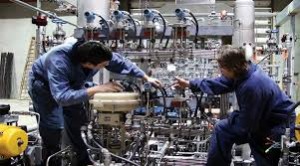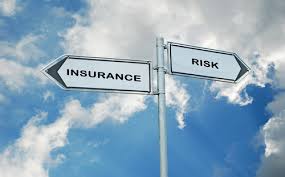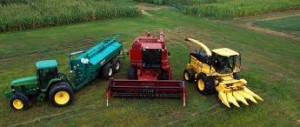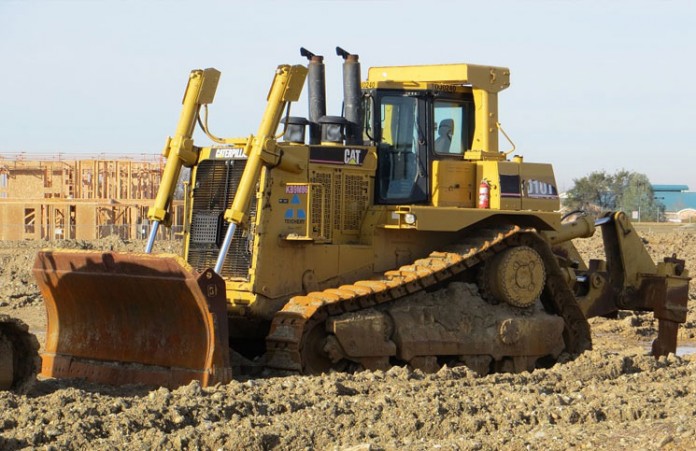In this blog post, Shubhalanga, a student currently pursuing a Diploma in Entrepreneurship Administration and Business Laws from NUJS, Kolkata, provides an overview of contractor’s plant and machinery policy insurance.
Introductory Note
Before glancing through the insurance policies covering Contactor’s Plant and Machinery, it would be a rational approach to discussing the central theme that revolves around such. The Contractor’s Plant and Machinery Policy in insurance are used to provide protection or insurance cover to a contractor.
It operates on an annual basis and includes such contractors who may be using their plant and machinery to work in different project sites. The insurance cover is not specific in nature. In other words, it is not bound to any particular site. The insurance cover remains operative at all sites wherever the plant and machinery are used. The only consideration here is that the insurers have to be informed about the particulars of the site where the cover is to operate.
Indemnity
The insurer shall indemnify the insured by payment or repair or reinstatement as it deems fit in the case of a sudden unprecedented and uncalled for the physical accident, subjected to the terms, conditions and provisions of the insurance policy. The insurance can extend to the insured items even if they are at rest and not in motion, or whether they are being dismantled for the purpose of cleaning or overhauling or its subsequent re-election.
The liability of the company shall in no way exceed the sum that has been insured for. Sum here refers to the amount of money that is equivalent to the cost of the insured property where it should be noted that this new property carries a similar capacity and may be put to similar usage.
If the question is of repair, the insurer shall pay the sum which is due for such purpose so as to restore the insured machine to its original state. The cost of repair includes the cost of dismantling and re-erection, freights cost and customs duties. The insurer may render such insurance only after being convinced by the reasonable evidence that such damage had arisen out of any one of the risks that had been previously insured for.
If on the other hand the insured property is subjected to absolute destruction, then the insurance company shall pay the actual value of the property when such an unforeseen event culminates to actuality. The insurance shall cover the customs duties, express freight, night work, work on public holidays and the like. However, the cost of improvements, alterations would remain unrecoverable by this policy.
Where there has been a provisional repair, such will be borne by the insurance company if it forms a part of the final expenses and does not constitute an additional burden to the cost of repair. The company is entitled to pay only after being furnished with the bills and other related documents validating the effectuation of the repairs.
Obligations of the Insured
While writing about an insurance policy, it becomes all the more pertinent to discuss the obligations of the insured, which may be referred to as follows –
- The insured shall take reasonable care to ensure that the property is in an efficient working condition and there remains no intentional overburdening to it. The insurer remains duty bound to oblige by the manufacturer’s instructions as to the operations and handling of the same and abide by the statutory or municipal regulations.
- The officials of the insurance company may assess or inspect the property insured at any reasonable time, and the insured in this case remains obliged by duty to disclose the relevant documents, inquired for. It is important to note that in case of material change in the risk involved, alteration or modification to the insured item, departure from prescribed operating conditions where the magnitude of risk increases, or a change in the insured’s interest, the policy of insurance relating to the contractor’s plant and machinery shall remain void unless the continuance is agreed by endorsement signed by the company.
Exceptions
There are certain exceptions to the general provisions of insurance extended in case of contractor’s plant and machinery –
- If more than one item is damaged, the insurer shall however not be liable to pay more than the highest single excess applicable to such items.
- Loss or damage caused due to electrical or mechanical breakdown, breakage or derangement, freezing of coolant or the like and if such damage causes an external destruction, then it remains within the purview of indemnity.
- Damage caused due to the explosion of a boiler, steam or pressure vessel shall not be indemnified.

- Any loss or damage to vehicles used on a general road, unless they are specifically used in the construction site, falls within the exception.
- Tidal water immersing the machinery or plant remains exempted from insurance.
- Loss due to transit or continual usage/operation, resulting in corrosion or rust falls beyond the ambit of indemnity.
- The damage that accrues while the insured machinery goes for an underground test or the like pertaining to anything that it was not insured for in the first place falls within the exception.
- Damage caused by war, invasion, aggression, insurrection, confiscation, etc. typically lies beyond the insurance cover.
- Loss, arising out of radioactive contamination or nuclear reaction also lies beyond the insurance cover.
- Damage caused by the negligent act of the insured or for which the supplier or the manufacturer is responsible falls beyond the purview of insurance.
- Also, any loss accrued of a pre-existing damage with or without the knowledge of the insurer, cannot be covered by the insurance policy.
Extensions
The extensions of the insurance cover may be briefed for a better understanding. They are –
- Third party liability
- Escalations
- Air freight
- Additional custom duty
- Owner’s surrounding property
- Express freight, holiday rates, overtime wages
- The cost incurred in the clearing and removal of debris following the accident.
Illustrations
Illustration 1: Company A is undergoing construction work. The prescribed date for the completion of the project or the deadline, in common terms, is increasingly approaching. Because of this, the workers chose to work day and night for about 18 hours a day to meet the requirement. One of the machines in response to such continuous work breaks down and cannot be repaired fast due to the unavailability of the replacement parts within that time frame. Thus the company decides to import a second machine which is similar in nature and capacity.
In such circumstances, it should be noted that the insurance cover would be extended by the Insurance company.
Illustration 2: Company B has a property that estimates to 2 lakhs. Evidently, the insurance cover that it has opted for is of the same amount. However, due to the uncurbed inflation, the price of the property hits 2.24 lakhs. Hence this is a clear case of under subscription of the insured amount. In such cases, the insurance company make use of escalations in response to the rising prices and the current market value.
Illustration 3: Company C gets a vehicle insured by the insurer. However the vehicle which was implicitly supposed to be used on the construction site has been over and again used on the road, and due to such rigorous usage of the same, there has been a considerable damage incurred. It is to be noted here that the insurance company is not liable to pay for such damages as the vehicle had been used for purposes that strictly fell beyond the ambit of the usage that it had been insured for in the insurance cover.
There is a better relief in cases of certain types of machinery used in the construction site according to the contractor’s plant and machinery policy. They are – 
- Bulldozers
- Excavators
- Mobile cranes
- Mobile drilling machinery
- Escalators
- Conveyors
- Mixing plants
Most of the times, there are certain considerations that the insurers are not quite vocal about but never ignore them in their assessment prior to extending the insurance cover. Some of the underwriting considerations may be stated.
- Age of the machinery and their general standard and quality including the hours of usage and so on.
- The general and overall condition of the project sites.
- Checking of the internal inspection that may be adopted by the contractors. This helps to determine the efficiency of review.
- The experience of the operators directly in charge of the operation of such plants and machineries.
Conclusion
The dispute between the insurer and the insured is an old time phenomenon. To bring about a harmony governing such terms of insurance, policy statements and schedules form a vital aspect. The idea is to bring about compliance from both ends, to ultimately render the needful protection from losses and preserving the faith in the insurance policies.
 Serato DJ Crack 2025Serato DJ PRO Crack
Serato DJ Crack 2025Serato DJ PRO Crack










 Allow notifications
Allow notifications



